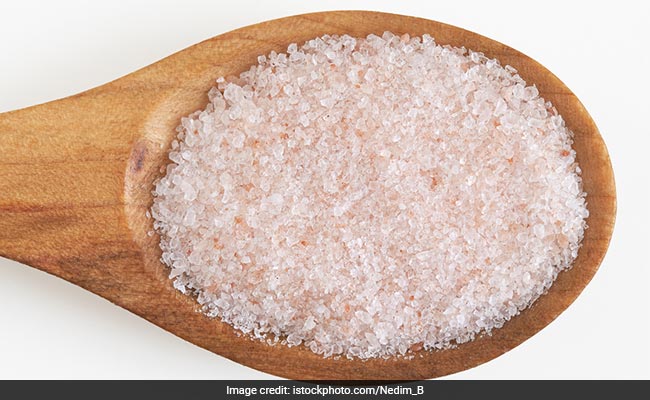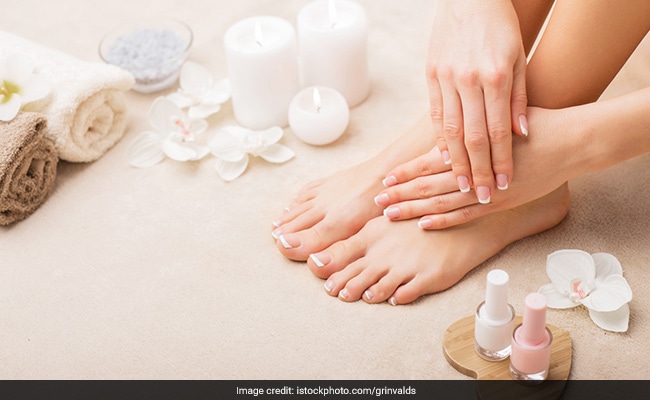
Can't really find the time to go for a pedicure? Is the skin on your feet hard and lifeless? No matter how much you cover up your feet, it will do you no good unless and until you give it a good cleaning. Seriously, don't take your feet for granted. Treat them to a proper pedicure with the right regime using the right products and tools. Consistent pedicures can help a great deal in getting rid of dead and hardened skin and get rid of cracked heels. And the best part is that you don't really need to head to the parlour but can do it all by yourself in the comfort of your home. Just get hold of a few things and you are good to go.
Here's a set-by-step guide to getting a pedicure done at home, with inputs from Sharad Kulkarni, in-house Ayurvedic doctor at Kama Ayurveda, and Shikhee Agrawal, head trainer at The Body Shop India:
File your toenails
The first step to getting a pedicure done is to cut the toenails and file them well. Most often we skip on the filing process, but it's required for a neat and clean look.
(Also read: DIY Foot Scrubs To Make You Feel Recharged)

File your toenails neatly
Make a foot soak with Himalayan pink salt
Use a powerful detoxifier like Himalayan pink salt and dissolve it in water. It tends to draw out toxins from the adipose tissues, resulting in the body feeling more energised. It also further reduces muscle soreness and cramps. Dip your feet in the soak for 10 minutes before moving onto scrubbing.
(Also read: 6 Skincare Tips To Help Slow Down Signs Of Ageing)

Pink salt reduces muscle soreness
Scrub your feet
Use a foot file or a pumice stone to gently rub away the hard skin or to smoothen cracked heels. You could use scrubs with kernels of apricot, almond, walnut or pine nut, as these make excellent natural polishers without being too harsh on the skin.

Scrubbing the heels
Make another foot soak with essential oil
Add an essential oil of your choice to your foot soak, to make the process a bit more relaxing. Use a rose oil as it is hydrating, antimicrobial and good for sore muscles and cramps. It is also a mood enhancer and helps dissipate anxiety. Lavender is another great option, if you are looking to go to bed straight after the regime. Peppermint, thyme, tea tree, and eucalyptus essential oils are also antibacterial, deodorising, analgesic and refreshing. Cedarwood and basil oils work well for soreness.

Add essential oils to the foot soak
Moisturise the feet and cuticles
After scrubbing and removing dead skin, you need to moisturise the feet to soften it. You could use nourishing oils such as almond or coconut oil or opt for rich hydrating creams that contain natural butters like almond, cocoa, shea, mango, and kokum (mangosteen).

Nourish your feet with oil or hydrating cream
Oil massage
For those who enjoy oil massages, you could add in this extra step. Use natural herb and spice formulations, blended in healing oils, to chase away stress. Sesame oil is a quintessential go-to oil in Indian households. Massage oils with pain-relieving pepper, camphor, ashwagandha, manjishtha, lavender or sandalwood are ideal too.
Final clean-up
For a fuss-free, efficient clean-up of the oil, wrap your hands or feet in a hot towel for a few minutes, then gently wipe your feet as you pull the towel off.
Apply nail paint or put on socks
You can apply a pretty nail paint neatly and head out or put on a pair of socks on your feet, so that the warmth and moisture of the cream remains locked in. This is a helpful tip, especially if you are going to bed straight after, so all the creamy hydration soaks into your skin through the night.

Other points to remember
Let your nails breathe from time to time, so take a break from applying nail paints. This can help prevent discolouration.
Apply sunscreen to your feet. Do not just halt to ankle, go on to put sunscreen on your feet as well. These not only protect your feet, but also protect protein made nails that are more defenceless to sun damage.
Inputs from IANS
Track Latest News Live on NDTV.com and get news updates from India and around the world
